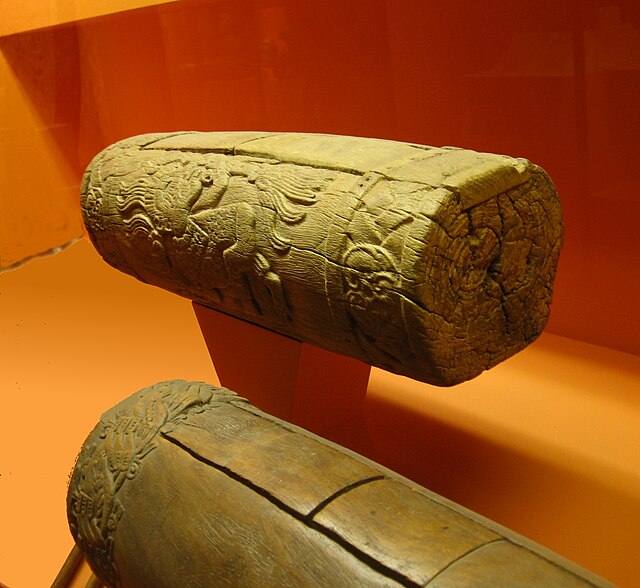The xylophone is a musical instrument in the percussion family that consists of wooden bars struck by mallets. Like the glockenspiel, the xylophone essentially consists of a set of tuned wooden keys arranged in the fashion of the keyboard of a piano. Each bar is an idiophone tuned to a pitch of a musical scale, whether pentatonic or heptatonic in the case of many African and Asian instruments, diatonic in many western children's instruments, or chromatic for orchestral use.
Xylophone with different types of mallets
Cameroon, ~1914
Kulintang a Kayo, a Philippine xylophone
African Xylophone also known as Ogbongelenge by the Igbo tribe. AID Project
A musical instrument is a device created or adapted to make musical sounds. In principle, any object that produces sound can be considered a musical instrument—it is through purpose that the object becomes a musical instrument. A person who plays a musical instrument is known as an instrumentalist. The history of musical instruments dates to the beginnings of human culture. Early musical instruments may have been used for rituals, such as a horn to signal success on the hunt, or a drum in a religious ceremony. Cultures eventually developed composition and performance of melodies for entertainment. Musical instruments evolved in step with changing applications and technologies.
Anne Vallayer-Coster, Attributes of Music, 1770. This still life painting depicts a variety of French Baroque musical instruments, such as a natural horn, transverse flute, musette, pardessus de viole, and lute.
Bamileke slit drum drummers in Cameroon's West Province.
Found in Slovenia, the Divje Babe Flute is sometimes considered the world's oldest known musical instrument
Two Aztec slit drums (teponaztli). The characteristic "H" slits can be seen on the top of the drum in the foreground.








